Today I want to talk about pressure that writers face to share their work, and the tools we have at our disposal to do so. Are you being unfairly asked to do too much by sharing online? Or are these opportunities you should be taking advantage of to reach your readers? Let’s dig in…
Many writers bemoan that they are asked to not only create, but share their work. Even those published by big publishing houses realize that they are expected to do a sizable portion of marketing for their books. Again and again, I have heard writer pine for “the good old days,” back when they were simply expected to write, and others worried about sharing and marketing that writing.
Well, let’s take a step back in time and consider the tools we had to create and share, and how people consumed this creative work. Below is a sampling of items from my personal collection of mostly vintage technology here in my studio. If you are of a certain age, you can perhaps even hear the sounds of these items in your head: the rotary dial of the phone, the gears of the 8mm camera, the clack of the typewriter, the static between stations on the radio. Or perhaps you smell the ink from the letterpress, and the shavings from the pencils. Yes, creating, sharing, and consuming art used to be a smelly and loud affair!
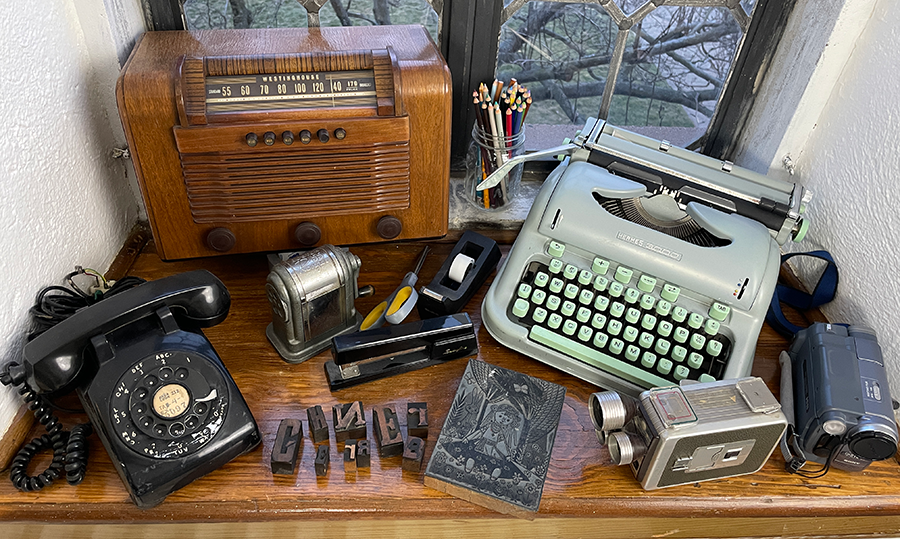
It was also expensive and not always easily accessible. For every song you wanted to hear, you had to seek it out and buy it. For an illustrator, you didn’t have the unlimited canvas of the screen to just sketch endlessly. Every sheet of paper cost money. I remember nursing the one pad of tracing paper I had when I was younger. Each sheet was an expensive commodity. When I earned $4.35 an hour in the food service industry, a $9 pad of tracing paper meant two hours of work to pay for:
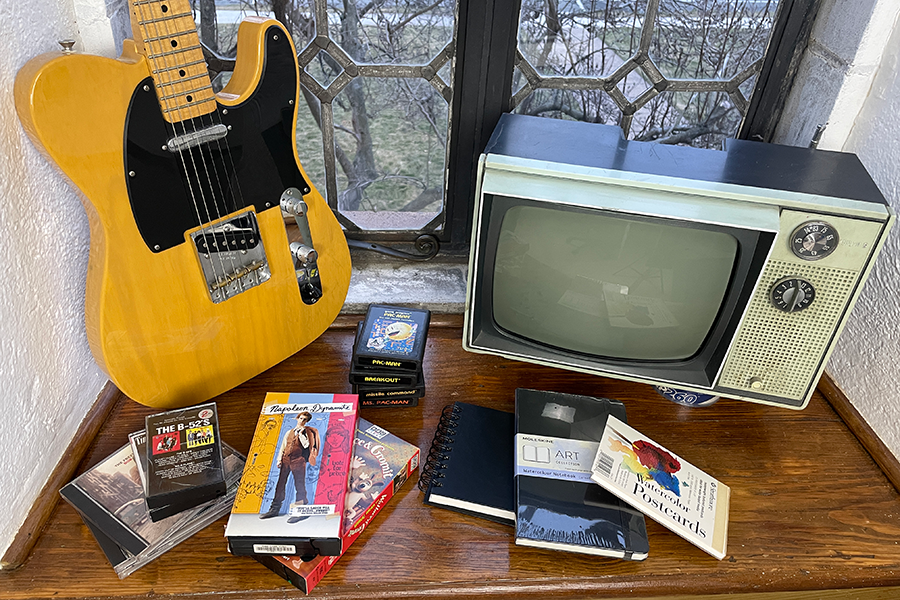
For someone listening to music, they couldn’t follow their favorite artist on social media; instead they often invested in making a stereo system the centerpiece of their living room. Below is the stereo system my brother had back in the early 1990s. I counted 93 buttons and dials on this stack of equipment, which was common years ago. Is tech today complicated? Sometimes. Was it complicated back then too? I think so.
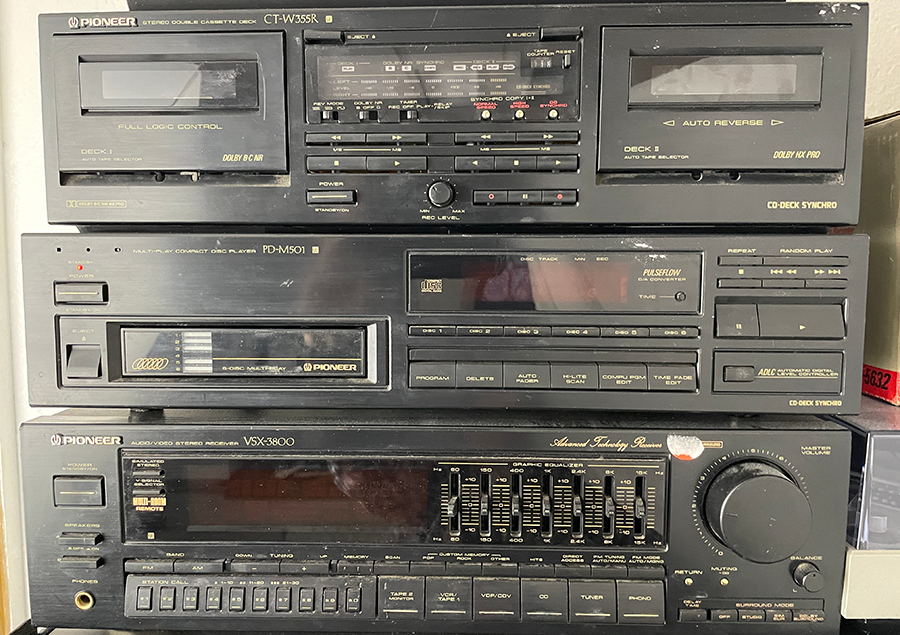
As I hold these tools in my hand, I consider:
- It was expensive to create. This differs depending on your field of creativity. A photographer would need not only a camera and lenses (no iPhone!) but film, and money to have that film processed. To share a photo would require making expensive prints, and then mailing them to others (no Instagram, no email!)
- It took time to share. Everything was slower than today because we often relied on physical mail or traveling to meet in-person.
- Our options to share were much more limited. Years ago you needed a publisher, because the cost to publish and distribute yourself was exorbitantly prohibitive, even if you could figure out a way.
- There was little distribution available to the writer or artist themselves. When I created my own fanzine in the early 1990s, I had to get on my bicycle and hand deliver issues to every store that I could talk into carrying them.
- Publication in even the smallest way, was very expensive. Want to print a brochure? A flyer? A newsletter? Go down to the print shop, or the 24 hour Kinkos (as I often did at 1am), and be prepared to spend money. This was sometimes serious money, especially for anything in color. I spent thousands of dollars to print single color issues of my fanzine back then.
- Access to others within your field was often expensive, difficult, and slow: It wasn’t easy to find someone’s phone number, long distance calls cost serious money, and letters or packages in the mail could take weeks to hear back about — if you heard back at all.
- Plenty of writers and artists talk about how they have a fear of being seen. Yet years ago, to share your work at all often required you to physically show up somewhere. You had to get to the place where you could maybe talk to the person who was a gatekeeper in your industry to make a pitch to them. You couldn’t just send an email from the comfort of your home.
Do I have fond memories of these times as well? Of course. Were there some upsides to “how things used to be”? Sure. Many of us can go on and on about a certain cafe, or bookstore, or place that was a “scene,” was filled with inspiring people, and that this was something that social media can’t replicate in the same way.
I also consider the tools and process we have today in order to create and share our work. Nowadays, many of the tools are free, or there is a free version of them available. When I was learning Adobe Photoshop and Illustrator in the 1990s, they were very expensive. The Illustrator program alone would cost $700. At the time, I couldn’t afford it, so I bought “Illustrator 8 Bible,” an 800 page book that weighed nearly 4 pounds. I read it cover to cover before I even had the program itself, as I slowly saved up money. But today there are many other options for design software beyond the Adobe tools, many of them are free or inexpensive to help new designers get started.
These tools are often easier to use and more intuitive than they used to be. A lot has been learned about usability in the past 30 years, and the better technology in our computers and phones means it is easier to create and share than before. Is “easier” better? Sometimes it is, sometimes it isn’t. For the example of Adobe Photoshop, I used to wait 20 minutes for the program to apply a blur filter, because my computer was slow. Then if I didn’t like the amount of blur it applied, I would have to redo it, waiting another 20 minutes. Was it better to have to wait 3 days to have film developed, and then learn from my mistakes, and then wait another 3 days to see if I got it right? Honestly, I prefer to see that in the moment now, with my DSLR camera. The cycles of learning and experimentation are so much quicker, and it makes me a better photographer.
That said, I also still have a film camera that I use occasionally, because film is truly magical to me. I have a beautiful Mamiya medium format camera that takes amazing film photos. My iPhone weighs 6 ounces, but this camera weighs 7 pounds, so I think twice before deciding to carry it around. Here it is, I included a pen in the photo as a reference for size.
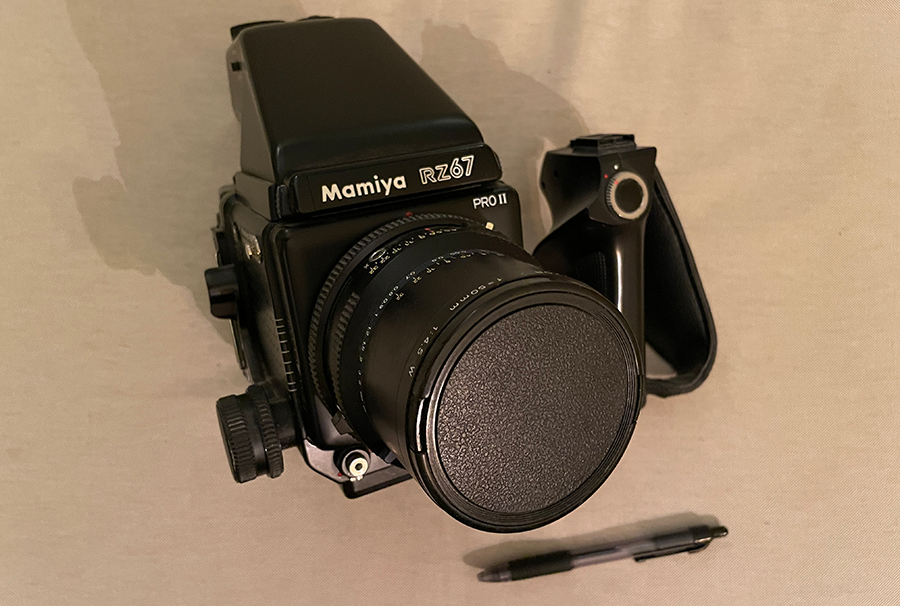
For professional level tools, they are now often cheaper and more available today than they were years ago. I can share countless examples. That $189 Fender Telecaster back in 1959 would cost nearly $2,000 in today’s dollars. You can get a brand new Telecaster nowadays starting at around $500-850. The same goes for tools like video editors, word processors, and so many other creative tools and those we use to share as well. Do I need to tell you about the wax paste-up machine I used in the 1990s at an ad agency that helped us physically glue together ads that would run in a newspaper? That thing probably cost thousands of dollars at the time. Now we can do the same thing (with much better quality) via free or inexpensive tools.
Of course for writers, typewriters were often the tool of choice, the epicenter of the creative process, weighing in at 15+ pounds. Here are some from my collection:
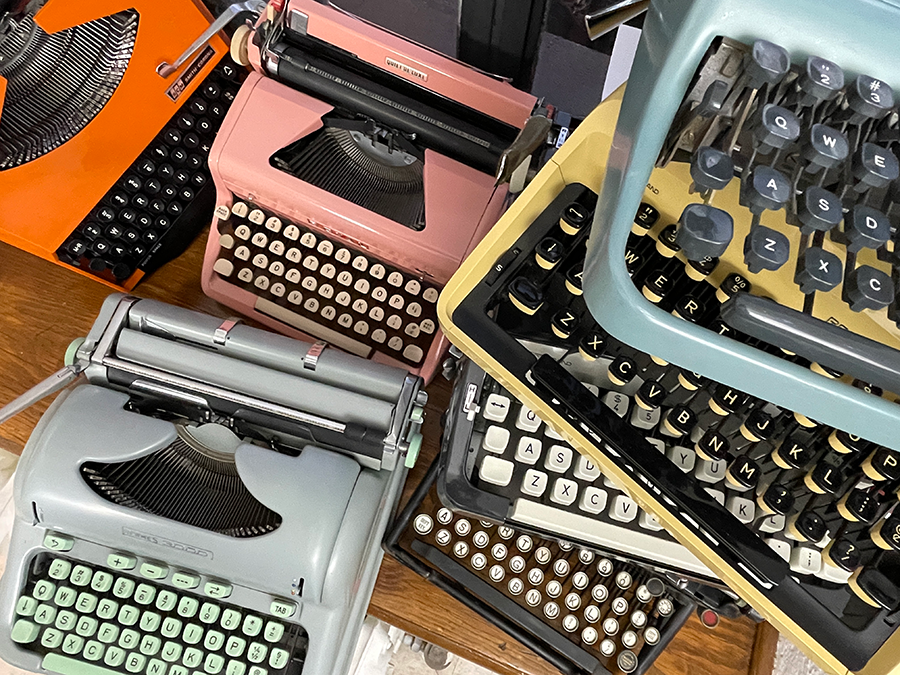
Our phones are creation and sharing machines. Are they also a distraction? Sure… I mean… wait… oh this cat video is sooo funny! Oh, where was I…
We have much greater mobility in how we create and share. Not only can we create and share from home (which is amazing), but we can do so on the go, and in the moment. Likewise, we have greater mobility in consuming writing and artwork. We can experience great art whenever and whenever. Is that always ideal? Maybe not. But I’d rather have the option than not.
Of course, all of this creates new challenges for you, the writer. I’ve heard many versions of these observations from writers:
- “So many more people share now than ever before! I feel like my work is no longer special because of it!”
- “The marketplace is soooooo crowded. Is it overcrowded? It would be silly to step into an overcrowded marketplace, right?”
- “Every trend is already over. I’m too late. Too late for newsletters, Instagram, online courses, podcasts, getting essays published. Again and again, I missed the boat.”
- “I absolutely want people to see my work, but definitely not see me. Can’t someone else share for me?”
- “Nothing works! I went on #bookstagram, but didn’t get many likes, so I stopped.”
- “I’m being a good literary citizen by scrolling on social media 9 hours a day. No, I haven’t written in weeks, why do you ask?”
- “I can’t look at Instagram anymore. Everyone is more successful than me. Plus… they have better hair.”
Every week, I help writers work through resistance to sharing. I do so with total empathy, and for every individual I work with, we customize a plan for them. Is sharing today easier than it was years ago? I think so . But that doesn’t mean it’s easy.
I’m not implying one is better than the other: old school vs modern times. I’m simply considering how the tools we have at our disposal to create, share, and truly connect with others are so much more accessible than they were years ago. This, like all things, is an opportunity for you the writer to make use of how you like.
Thanks!
-Dan
